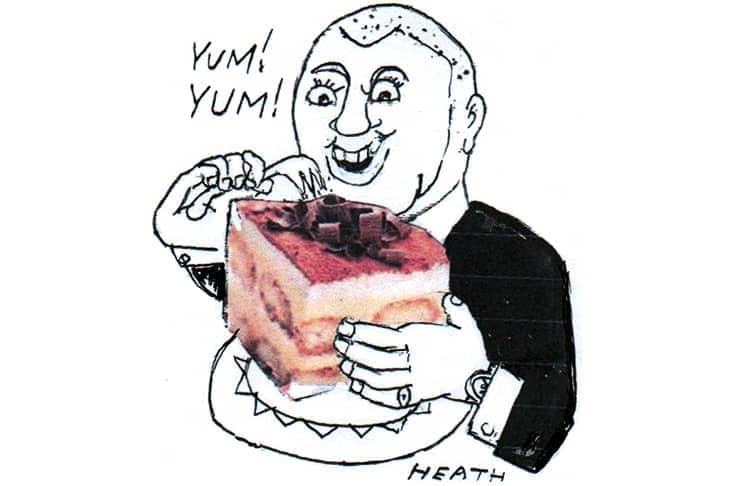You can get drunk on tiramisu. I have done it. It takes two portions at least. You drink (I mean eat) the Marsala wine and the rum — and then must be escorted, tenderly, to the bus stop. I don’t usually drink alcohol. If I did, I would smash up restaurants. But I do eat tiramisu. You have to eat a lot of tiramisu to be hospitalised. That is my reasoning.
Tiramisu means ‘lift me up’. Like Caesar salad and the world, it has a detailed creation myth with its own pretenders, factions, expert witnesses and conspiracy theories. There is a website, the Tiramisu Academy, devoted to the mystery of its origin. (‘Since 2011 we have been transmitting the culture of tiramisu.’) The academy suggests tiramisu was invented to inspire men meeting prostitutes in 19th-century Treviso: an early Viagra for clients who took a dose when leaving the brothel, so they could then copulate with their wives. This sounds plausible — an Italian equivalent of ‘my wife needs me to eat the last Quality Street toffee penny for sex’. The academy’s expert witness, the writer Giovanni Comisso, who remembered his grandmother’s personalised tiramisu, died in 1969.
The alternative narrative is that it was invented in Ado Campeol’s restaurant Alle Beccherie in Treviso in 1969 — the year Comisso died — by Campeol, his wife Alba and the chef Roberto Linguanotto, who is the Perkin Warbeck figure in this drama. In this telling it was either a lucky mistake — Linguanotto dropped mascarpone cheese into the mixture for vanilla ice cream in error — or a palliative for aching nipples and an aching heart.
Sugar, cheese and biscuits were Alba’s chosen foods to console her for the exhaustion she felt while breastfeeding her son Carlo; with Linguanotto she combined them. (The hard alcohol came later.)Campeol died last month with his title ‘the father of tiramisu’ intact. This feels depressingly patriarchal.
Some things are worth a battle. The alchemy in tiramisu is just that. There are three distinct flavours (coffee, sugar, hard alcohol) and three textures (cream, crumble, wet). When done properly, it is the greatest pudding there is. You can’t get high on a profiterole, though I have tried, and you can only get low on treacle sponge. When done badly, it is repulsive: ladyfingers in cheap booze; something found at the bottom of a sink. It must be firm, not soggy. The cheese must be light, not heavy. The best I had was in Venice, at Muro Frari. The worst was in Camden Town in a restaurant that I hope has burnt down.
There are variations, but I am a purist (though we must have hard alcohol). Can I say I really hate panettone? And that Tia Maria does not belong anywhere outside of a slur? And that vodka should only ever be drunk neat, and not inside food? You may say it’s just a trifle. Bah!







Comments